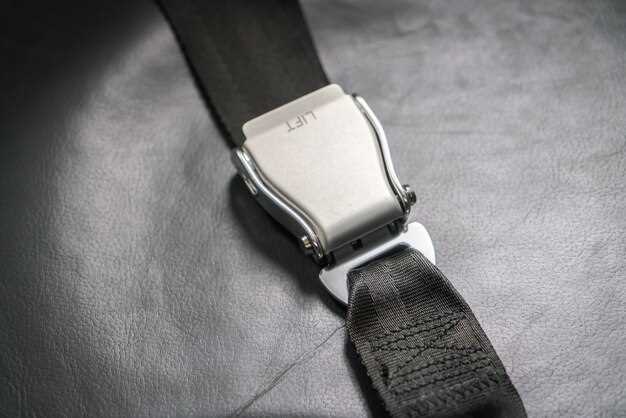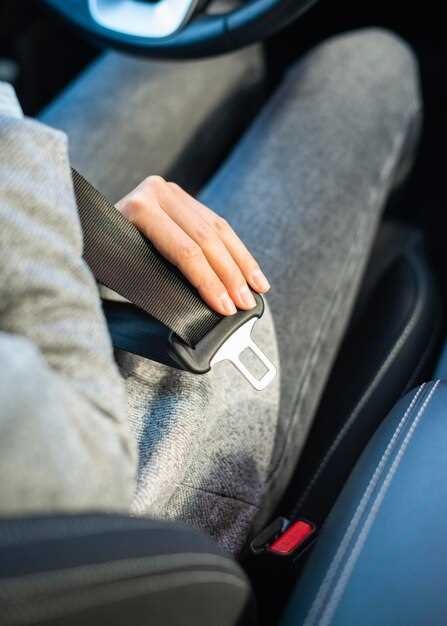
In the realm of automotive safety, the choice between a traditional seat belt and a racing harness can be pivotal. While seat belts have been the standard for decades, racing harnesses offer enhanced safety features that make them a superior option for high-speed environments. Designed for maximum protection, harnesses provide a level of support and stability that standard seat belts simply cannot match.
The primary advantage of racing harnesses lies in their construction. Unlike typical seat belts, which are designed for convenience and compliance, racing harnesses incorporate multiple straps that secure the driver and passengers firmly in place. This configuration minimizes the risk of ejection during a collision and reduces the likelihood of serious injury. Using a 5-point or 6-point harness system, the harness effectively distributes crash forces across the body’s strongest areas, enhancing overall safety.
Moreover, racing harnesses are engineered for the specific demands of motorsport, where every millisecond counts and the forces involved can be extreme. They are tested rigorously under high-stress conditions, ensuring that they perform reliably when it matters most. By contrasting the properties of racing harnesses with standard seat belts, it becomes evident that harnesses are not only a superior choice for serious racers but also an excellent option for anyone concerned about their safety on the road.
Enhanced Safety Features of 5-Point Harnesses

5-point harnesses provide a superior level of safety compared to traditional seat belts due to their design, which secures the occupant more effectively during high-impact situations. Unlike standard seat belts that only secure the upper body, a 5-point harness encompasses both the shoulders and the hips, distributing forces across a larger area and reducing the risk of injury.
The configuration of a 5-point harness features two straps that go over the shoulders, two more that secure the lap, and a central strap between the legs. This setup minimizes the forward movement of the occupant during a collision, which can significantly lower the chances of head or spine injuries. Additionally, in motorsport applications, where higher speeds and more intense forces are common, this added security becomes even more critical.
Moreover, advanced materials used in manufacturing 5-point harnesses often include reinforced webbing and high-strength buckles that can withstand significant forces. This engineering ensures that the harness remains securely fastened even during extreme conditions, providing peace of mind to users. Many 5-point harnesses also feature quick-release mechanisms, allowing for swift egress in emergencies without compromising safety during the drive.
Furthermore, the adjustable nature of 5-point harnesses allows for a customized fit that accommodates a wide range of body types and sizes. A properly fitted harness is essential for the effectiveness of its safety features, as it ensures that the straps remain in the correct position and function effectively in a crash scenario.
In conclusion, the enhanced safety features of 5-point harnesses establish them as a superior choice for those seeking maximum protection. Their design not only improves occupant security but also enhances the overall driving experience by allowing for increased focus on performance without compromising safety.
Minimizing Driver and Passenger Movement During Impact
In high-performance racing environments, the capacity to maintain driver and passenger stability during a collision is paramount for safety. Racing harnesses, particularly 5-point harness systems, are engineered specifically to minimize unwanted movement during impact. Unlike standard seat belts, which typically employ a 3-point system, 5-point harnesses secure individuals at five key points: two shoulder straps, two lap belts, and a crotch strap. This comprehensive restraint system effectively confines the occupant’s body, reducing the risk of injuries associated with sudden deceleration.
By distributing forces over a larger area, 5-point harnesses decrease the likelihood of severe trauma. In a high-speed incident, the design of these harnesses prevents lateral and vertical movement, keeping the driver firmly positioned in the seat. This stability is essential not only for protecting the occupant but also for maintaining control of the vehicle in emergency situations.
Furthermore, the snug fit achieved by a correctly installed 5-point harness serves to align the body’s center of gravity with the seat, minimizing the chances of whiplash and other impact-related injuries. The additional restraint provided by the crotch strap helps prevent the driver from sliding beneath the lap belt, a dangerous occurrence known as ‘submarining.’ Therefore, the enhanced design of racing harnesses significantly contributes to the overall safety of the racing experience.
In conclusion, the superiority of 5-point racing harnesses lies in their ability to restrict movement during critical moments of impact, ultimately safeguarding drivers and passengers from the severe consequences of collisions. The advanced technology and design principles behind these harnesses represent a vital advancement in automotive safety in the racing world.
Improving Comfort and Support for Long Races

A racing harness provides enhanced comfort and support compared to traditional seat belts, especially during long races. The design of a harness distributes weight evenly across the body, reducing pressure points that can cause discomfort over time. This is particularly important for drivers who endure prolonged periods of sitting in a confined space, where standard belts may lead to fatigue.
Furthermore, racing harnesses are often equipped with padding and ergonomic adjustments that cater to the driver’s needs, creating a more personalized fit. This attention to detail ensures that the harness not only secures the driver but also allows for greater mobility within the seat without compromising safety. The ability to adjust the straps can greatly enhance the overall experience, ensuring that the driver remains focused and comfortable throughout the race.
In addition, the safety features of a racing harness contribute to its superior support. The multi-point attachment system minimizes body movement during sharp turns or sudden stops, providing both physical stability and mental reassurance. This combination of comfort and safety allows drivers to perform at their best, knowing they are securely fastened while experiencing less strain on their bodies.
Ultimately, the thoughtful construction of racing harnesses offers a strategic advantage for drivers, enhancing their capability to withstand the physical demands of long races while ensuring their safety remains a top priority.
